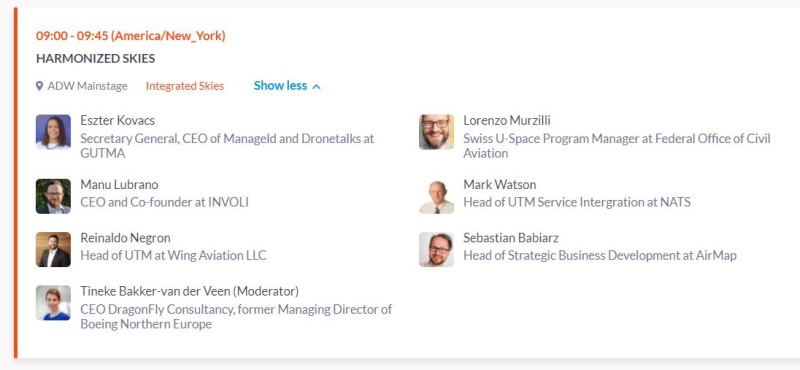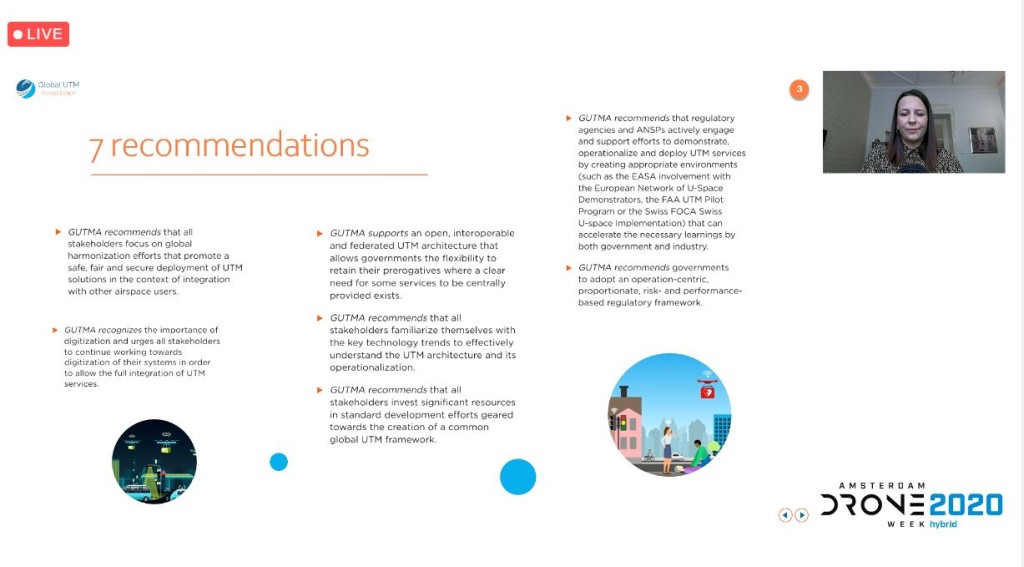Airplanes are beautiful. For those of us who have dedicated our lives to aviation, aircraft hold a special place in our heart. Their sleek lines, shining surfaces and powerful engines have become part of our daily lives and flying them constitute an important part of our livelihoods.
This is also true for unmanned aircraft, or UAVs (unmanned aerial vehicles), which are creating a revolution in aviation in terms of design and materials. This innovative new generation of aeronautic engineers working on UAVs today are creating beautiful and efficient flying machines that are catching the attention of traditional manufacturers like Boeing and Airbus. That might explain why UAV events and conferences have been so popular recently. People love to see these machines up close and talk to their designers, see them flying and enjoy the diversity of specifications and end-uses.
But what happens when the conferences are virtual due to COVID-19? What happens when the agenda is completely void of flashy flying machines on the exhibition floor? Well, we have to focus on the less attractive areas of our industry, such as UTM (UAV Traffic Management), regulations and ethics.
This was the case recently at virtual Amsterdam Drone Week (ADW) where the first day almost every presentation was about UTM and U-Space and the European effort to make it happen.
We have all agreed that without an appropriate UTM system that can function without the intervention of air traffic controllers this industry isn’t going anywhere. The organizers of ADW made the right choice when they decided to focus on the elements that are needed for a massive deployment of drones in controlled airspace. Certification, safety and UTM played center stage in a virtual event that didn’t have shiny objects to attract attendees.
It was particularly rewarding that UAV’s and urban air mobility (UAM) platforms were treated equally, in other words ADW organizers recognized that drones and air taxis share the same hurdles to deployment and addressed them in the same way. Various panels addressed the immense number of challenges facing the industry, especially in light of the imminent change in landscape in Europe when, on December 31st, drone regulations throughout the continent will become one for all EASA members. This basically means that once a drone pilot has received a valid authorization from their state of registry, they will be allowed to freely circulate within the European Union.
This harmonization of the regulations is a great step forward in the development of common strategies to address the impediments to massive deployments of UAVs and UAMs, especially UTM.
GUTMA, the Global UTM Association published a whitepaper in November, “Designing UTM for Global Success,” which we highly recommend for everyone in the industry to read. It outlines the requirements and current efforts to harmonize how to manage unmanned platforms in controlled airspace and how to avoid costly mistakes when adopting the various options.
One particular panel, “Harmonized Skies” addressed this whitepaper in detail focusing on the different platforms and how they interact with existing ATC to make sure the system works with manned and unmanned platforms sharing the same airspace.

After the conclusion of the presentations and the Q&A session, we reached out to Manu Lubrano, CEO of Involi and member of the panel, to dig a little deeper into the discussion and the implications for the industry.
“I believe that the publication of the GUTMA whitepaper represents an important milestone in the consolidation of opinions and technologies and in pursuit of a workable solution,” Manu said. “It’s very important that we have a flexible and federated UTM architecture that allows interoperability between service providers, between regions and countries, between different technologies and systems and finally with existing ATC.”
Remote ID has been a controversial issue from the beginning, and we asked Manu about his opinion.
“Remote ID is necessary, and it will be a key determinant of the success of a workable, pan-European UTM solution,” Manu explained. “The same way that an air traffic controller asks a pilot to identify its aircraft either through a voice command or pushing the IDENT command on a transponder, unmanned aircraft have to have the capability to tell every other aircraft in the vicinity who they are and what they are doing.”
Another important finding in the GUTMA whitepaper, and the subject of analysis by the panel, was the role of supplementary data service providers (SDSP) such as Involi. These SDSPs provide the UTM system with digitized and contextual data that assists unmanned operators to mitigate risks.
In conclusion, the emphasis on UTM that we witnessed during virtual Amsterdam Drone Week 2020 will probably do more to advance the cause of manned and unmanned aircraft sharing controlled space, than any demo of a beautiful flying machine.















Comments